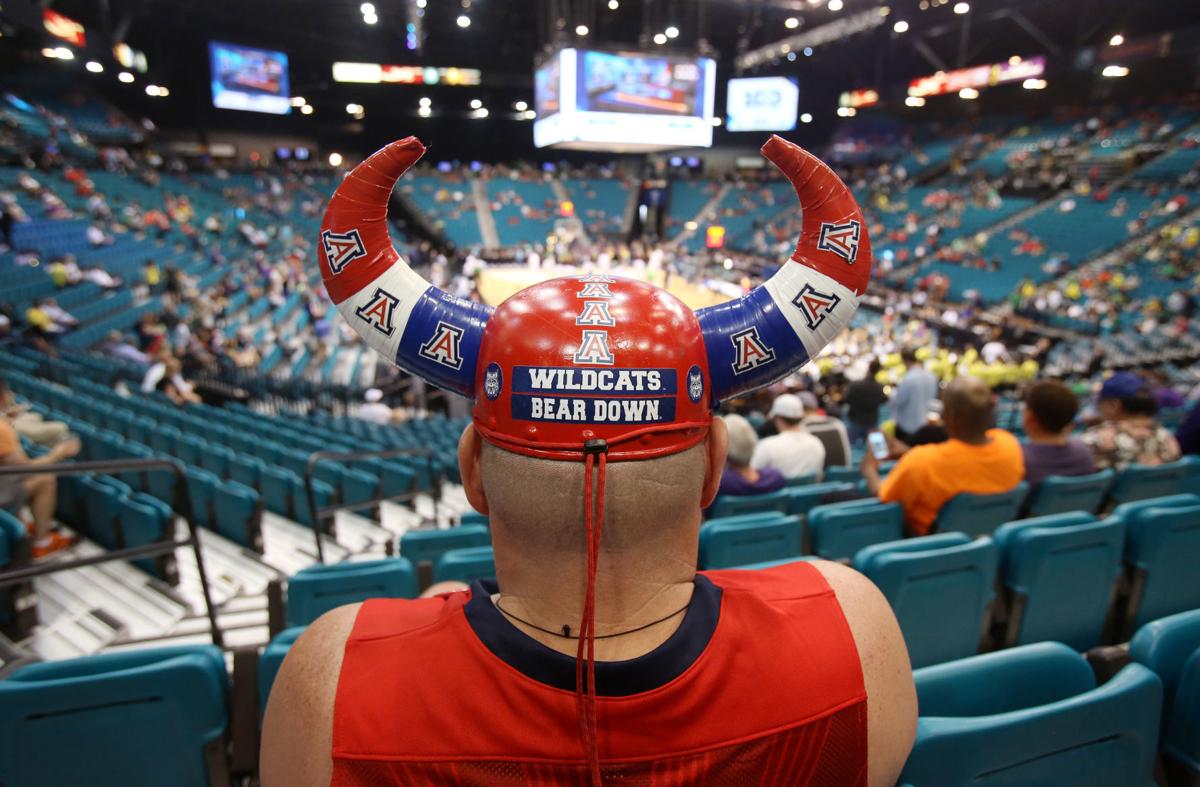How March Madness, 2019, has changed: As of Monday afternoon, 12 of Southwest Airlines’ 13 Sunday flights that will get you from Las Vegas to Tucson remained available for purchase.
For the last six years, every time I checked Southwest’s Vegas-to-Tucson availability for day-after-the-Pac-12-Tournament flights, I saw the same two words: SOLD OUT.
Are you going?
I didn’t think so.
Maybe, like an old “Seinfeld” episode, the Pac-12 will hire “seat fillers” so that the 20,000 available seats at the T-Mobile Arena won’t look like it’s a Washington State-Cal game on a snowy night in Pullman, Washington.
Minus its customary 10,000 or 12,000 Arizona fans, the Pac-12 Tournament is apt to look and feel a lot like the 1990 Pac-10 Tournament, when only 36,052 showed across five sessions (and a mere 8,037 for the championship game.)
It was after that fiasco that the power bloc of Arizona’s Lute Olson, Stanford’s Mike Montgomery, UCLA’s Jim Harrick and their athletic directors successfully shut down the Pac-10 tournament for the next 12 years.
Now what?
Do you think oft-dispassionate Arizona State fans, buzzed by the school’s highest-ever second-place finish, will buy 10,000 seats whenever the Sun Devils play? Or do you think Washington Huskies fans, whose unranked team went flat the last three weeks of the regular season, will pay about $2,000 per person to fly from Seattle for a week of basketball in Las Vegas?
For the first time, it’s up to them to carry the weight.
Outside of Tucson, Pac-12 basketball has few hard-core, passionate fans. There are 75 teams in the six power conferences and here’s how this season’s NCAA home attendance ranks at the bottom:
75 – Washington State, 2,318.
74 – USC, 3,247.
73 – Stanford, 3,894.
72 – DePaul, 4,490.
71 – Oregon State, 5,119.
70 – Boston College, 5,243.
69 – Cal, 5,627.
That’s the most glaring indictment of Pac-12 basketball I’ve seen — five teams ranking in the bottom seven of attendance, and only one, Arizona at No. 19, anywhere near the top.
The Pac-12’s move from the MGM Grand Arena (capacity 12.916) to the T-Mobile Arena (capacity 20,000) was sensational in 2017. Arizona drew 18,153, 19,224 and 18,927 in its three games.
It slipped last year. Arizona drew 15,182 and 16,596. The championship game against USC drew 16,501. Without exaggeration, there couldn’t have been as many as 500 Trojan fans in the building.
Both UCLA and USC have had difficulty creating support in Las Vegas, even when the Bruins were loaded.
For the Pac-12 Tournament to be a consistent success at the gate, it’s imperative for Utah to return to national relevance. The Utes ranked 24th in the NCAA in attendance this year, 11,067, and it’s a short enough drive — 420 miles from Salt Lake City to Las Vegas — that it’s conceivable Utah fans could someday rival Arizona in numbers.
As UA fans discovered long ago, attending the Pac-12 Tournament is a considerable financial commitment.
According to the no-fee secondary ticket marketplace TickPick, all-session tickets for the Pac-12 Tournament are an average $802 per package.
What makes selling the Pac-12 Tournament more difficult is that it’s tapping into the smallest conference audience of the six major basketball leagues. It’s almost stunning how the Pac-12 lags in fan involvement.
Here are this year’s attendance figures:
- Big Ten – 2,956,401 tickets sold. Average per game: 12,527.
- ACC – 2,765,375 tickets sold. Average per game: 11,571.
- SEC – 2,501,95 tickets sold. Average per game: 10,166.
- Big 12 – 1,694,740 tickets sold. Average per game: 10,209.
- Big East – 1,681,161 tickets sold. Average per game: 10,007.
- Pac-12 – 1,411,365 tickets sold. Average per game: 7,313.
The numbers don’t lie; it’s a sobering look at Pac-12 basketball.
This year’s total draw of 1.4 million is the lowest in the league since 2012 — a season lumped with 1985 as the worst in league history — when just 1,341,518 paid to watch Pac-12 basketball.
Even Arizona plunged from 14,500 to 13,744 per home game.
It’s not that fans of the Ducks, Beavers and Golden Bears stay home to watch on TV. The Pac-12 Networks only circulates to 18 million American homes. Compare that to the seldom-discussed CBS Sports Network, which has roughly 65 million subscribers.
Alas, this week, eight of the 11 games at T-Mobile Arena will be broadcast only on the Pac-12 Networks.
Across the nation, it will be as if Pac-12 basketball does not exist, especially given an 11:30 p.m. Eastern time ESPN tipoff for a Friday semifinal, and the ESPN Saturday finals at 10:30 p.m. in the East.
Since leaving the we’ve-got-other-things-to-do L.A. market and Staples Center in 2011, the Pac-12 struck basketball gold. Las Vegas sold. A murmur became a buzz.
Now it’s up to the league and its members to figure a way to sustain that buzz while the Wildcats take a year to reinvent themselves and their fans find out what life without the Madness is like.





